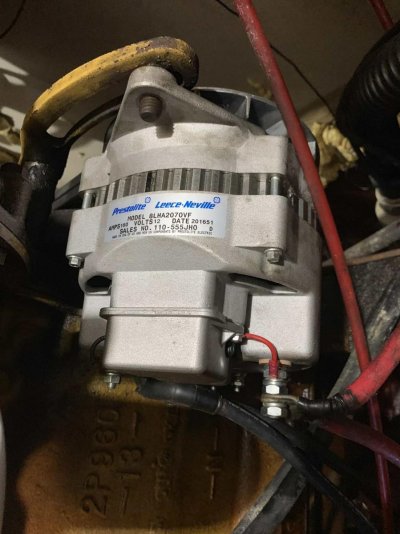LeoKa
Guru
- Joined
- Apr 15, 2017
- Messages
- 1,150
- Location
- USA
- Vessel Name
- Ironsides
- Vessel Make
- 54' Bruce Roberts steel sailboat hull, coastal LRC, 220HP CAT 3306.
I have a 160A alternator on my 3306 CAT engine. It was a replacement for a dead 120A alternator about three years ago.
See photo.
Recently, I do not see charging on the voltage gauge in the pilot house. The needle goes down to yellow, close to red. I am single handed, so I cannot go to the engine room to check the voltage on the cranking battery directly.
If I run my generator, the charge happens and I can see normal voltage on the gauge. Both the alternator and the generator can charge the cranking batteries.
Sometimes, the charge happens even from the alternator alone, but it takes a while this to happen. I could be underway for 30-40 minutes already, when the charging from the alternator appears. Sometimes, it does not happen at all.
I cannot tell, if the alternator has issues, or it is dying. My knowledge is limited on this.
Do you recommend a replacement, testings, or a larger capacity alternator? If yes, which one would you buy? Thanks.

See photo.
Recently, I do not see charging on the voltage gauge in the pilot house. The needle goes down to yellow, close to red. I am single handed, so I cannot go to the engine room to check the voltage on the cranking battery directly.
If I run my generator, the charge happens and I can see normal voltage on the gauge. Both the alternator and the generator can charge the cranking batteries.
Sometimes, the charge happens even from the alternator alone, but it takes a while this to happen. I could be underway for 30-40 minutes already, when the charging from the alternator appears. Sometimes, it does not happen at all.
I cannot tell, if the alternator has issues, or it is dying. My knowledge is limited on this.
Do you recommend a replacement, testings, or a larger capacity alternator? If yes, which one would you buy? Thanks.

Last edited:
